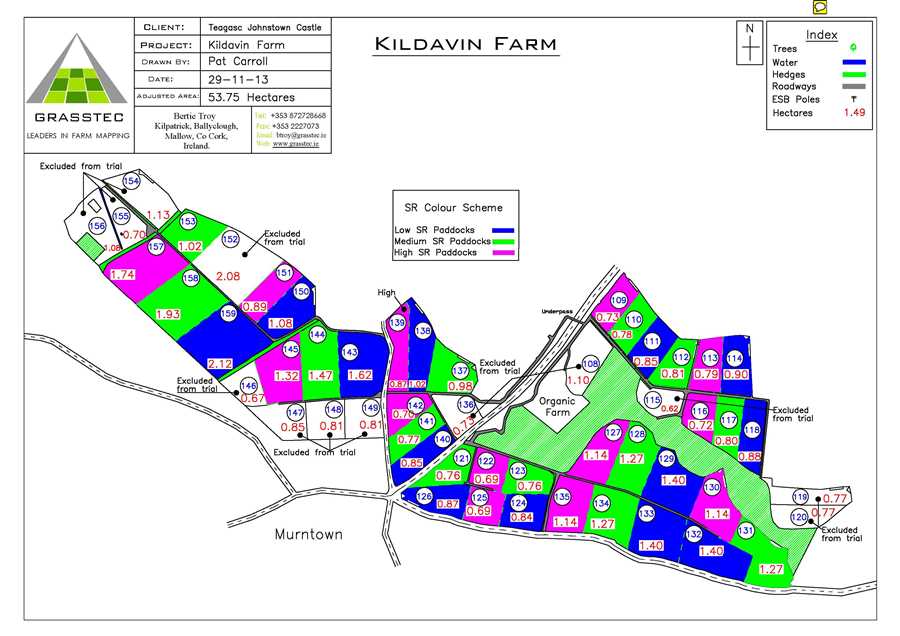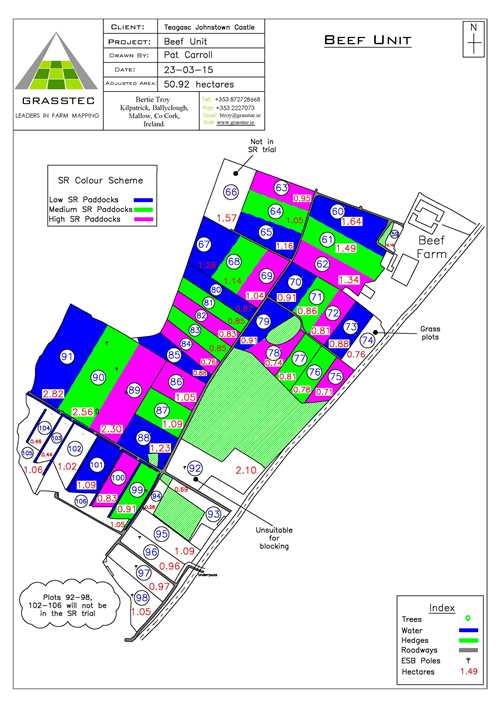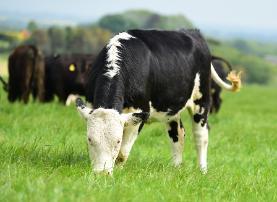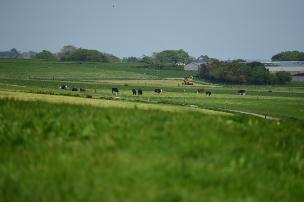Farm Profile
Area
The beef research farm is divided into two units, the Beef Unit and Kildavin Farm (formerly the Organic Unit). The Beef Unit covers an area of 50.92ha, while Kildavin Farm covers 53.75ha, giving a total of 104.67ha. Of this, 44.3ha are excluded from the beef research trial work currently ongoing in Johnstown Castle. Some of this area is used to graze the Teagasc Grange maternal herd steers and heifers, while some is used for other environmental research and experiments.
Location
Latitude 52°17’N, longitude 06°30’W. Elevation 55m.
Soil type
The distribution pattern of the soils within Johnstown Castle beef farm is complex and varied. The soils range from reasonably free draining Brown Earths to gley soils and other such soils with moderate or poor drainage capacity.
Paddocks
In the beef unit there are 47 paddocks ranging between 0.46 and 2.82ha in size. The Kildavin farm is divided into 51 paddocks, ranging from 0.62 to 2.12ha. The Kildavin farm is divided twice by two public roads. An underpass and farm roadways facilitate the movement of cattle between the farm units.
The two units are run as one farm, which is subdivided into low, medium and high stocking density farmlets for the Herbage allowance trial 2015 -2019.(pdf) There are approximately 26 paddocks not included in this study. The high, medium and low farmlets have 23, 24 and 24 paddocks respectively. These can be seen on the farm map as blue (low stocking rate), green (medium stocking rate) and pink (high stocking rate) colour codes.

 Beef building infrastructure
Beef building infrastructure
Kildavin Unit
- Covered cattle crush and drafting facilities.
- 3 silage pits
- Calf rearing shed – approximately 150
- Winter accommodation – 65 finishers and 60 weanlings
Beef Unit
- Covered cattle crush and drafting facilities.
- 2 silage pits
- Winter accommodation – 350 finishers and 320 weanlings


